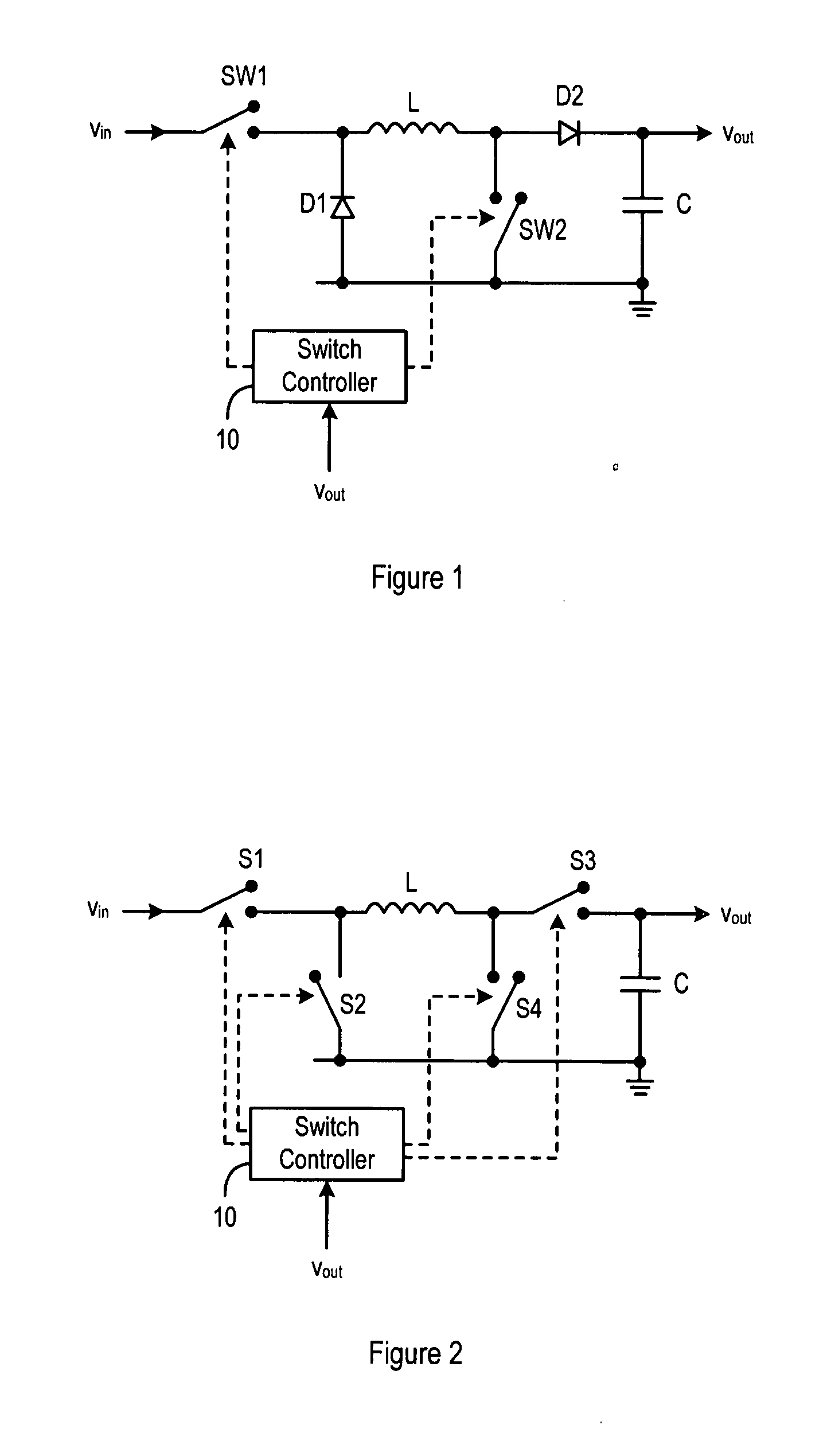Buck-boost converter
a converter and buckboost technology, applied in the direction of dc-dc conversion, power conversion systems, instruments, etc., can solve the problems of reducing the efficiency of the converter considerably, requiring a larger inductor, and not being attractive to the eye, so as to achieve constant output voltage and high efficiency, without affecting efficiency
- Summary
- Abstract
- Description
- Claims
- Application Information
AI Technical Summary
Benefits of technology
Problems solved by technology
Method used
Image
Examples
Embodiment Construction
[0038]Embodiments of the present invention will now be described with reference to a four-switch type buck-boost converter as shown in FIG. 2. This buck-boost converter is modified from that shown in FIG. 1 in that the two diodes D1 and D2 of FIG. 1 are replaced by switches. Thus, the switches labelled S1, S2, S3 and S4 in FIG. 2 correspond to SW1, D1, D2 and SW2 of FIG. 1 respectively. In this case, S2 and S3 can be viewed as synchronous rectifiers.
[0039]The present invention can be applied to either configuration of buck-boost converter shown in FIG. 1 or FIG. 2. It is also possible to configure a buck-boost converter with three switches and one diode; for example, S3 of FIG. 2 could be replaced by a diode. The switch or the diode located in the positions of D1 and D2 in FIG. 1 may collectively be referred to as a current control means. MOS transistors, the gates of which are coupled to the switch controller 10 for receiving control signals, are preferably employed as the switches...
PUM
 Login to View More
Login to View More Abstract
Description
Claims
Application Information
 Login to View More
Login to View More - R&D
- Intellectual Property
- Life Sciences
- Materials
- Tech Scout
- Unparalleled Data Quality
- Higher Quality Content
- 60% Fewer Hallucinations
Browse by: Latest US Patents, China's latest patents, Technical Efficacy Thesaurus, Application Domain, Technology Topic, Popular Technical Reports.
© 2025 PatSnap. All rights reserved.Legal|Privacy policy|Modern Slavery Act Transparency Statement|Sitemap|About US| Contact US: help@patsnap.com



